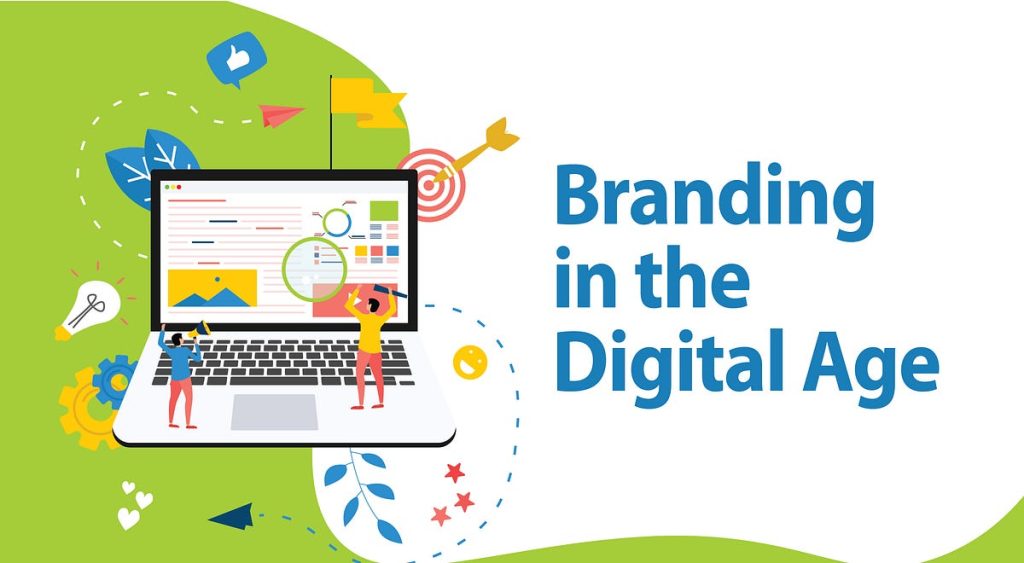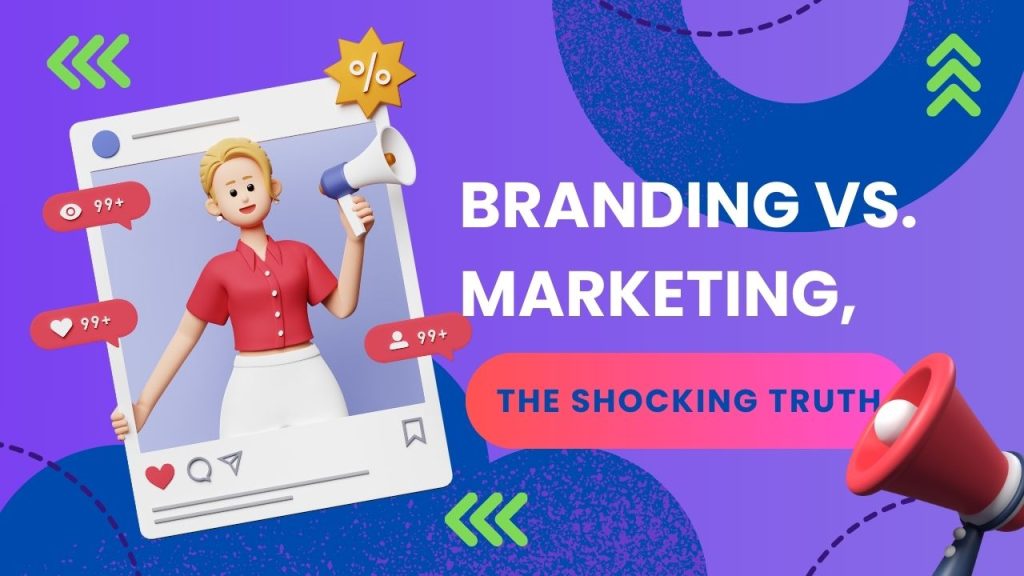Branding vs. Marketing, The Shocking Truth
Table of Contents
The subtlety of branding and marketing relationships can change the way your strategy looks and you will see that your business can only benefit from it. While people sometimes use branding and marketing as two words with similar meanings, these terms are vital for business, and their processes should be targeted to work as complementary strategies that create a strong base for a business. This all-encompassing article reveals the ugly reality of branding vs marketing that could revolutionize how you are looking at business development.
Introduction
In business, it is very important to distinguish between branding and marketing considering the fast-paced market systems. Growth and success cannot be overemphasized, although they are entirely distinct from each other in function. On the other hand, branding can be understood as the process of making the brand recognizable and appealing to buyers, while marketing can be viewed as the process of stimulating buyers’ desire to purchase products bearing this brand. The relationship between these two can either make or mar a company’s image and, therefore, its financial performance. Through critical analysis of the difference between brand and marketing, organizations can devise ways and means of establishing long-term relationships with customers.
Branding vs. Marketing
Thus, at first sight, it is easy to assume that branding and marketing are the terms that can be used interchangeably. However, it has to be noted that their primary activities and functions are different. It is defined as the management process by which the company develops a positive image of the entity, product, or service in the mind of the customer. This includes items like logos, the designing of a company image, mission statements, and branding of the identical aesthetic experience throughout every advertisement. Marketing deals with the approach employed to influence the activities aimed at the creation and provision of a particular product or service. It encompasses market analysis, promotion and marketing of the product, sales, and getting the product to the consumers.
What is Branding?
Branding is not just about the logo and the wonderful slogan to tag along with it. It summarizes the very purpose of a business – the reason for its existence, what it seeks to achieve, and what it considers to be important. Thus, a strong brand conveys such elements successfully and builds an emotional bond with the target viewers. This connection helps build the customer base and make a one-time buyer a customer for life.
Elements of a Strong Brand
A strong brand is built on several key elements:
- Logo and Design: Refers to the logo therein that should be identifiable to belong to your brand.
- Voice and Tone: The way the brand behaves, especially when conducting communication with the audience.
- Values and Promise: These would refer to the fundamental behavioral assumptions that guide a brand.
Here we can observe that all these elements are also correlated and help to form the unique brand image to match the customer’s expectations.
Brand Identity vs. Brand Image
Before moving to explain the difference between brand image and brand identity, it is crucial to define the two concepts. Brand image, on the other hand, is the perception that the organization would like the customers to have of it. This covers visuals, tone of communication, and concept of the brand. Brand image on the other hand is the concept that the audience has about the brand. It is always important to have a clean and coherent image, and this specific type of coherence is the equivalence between the brand identity and the brand image.
The Role of Consistency
Brand uniformity is, therefore, important in the marketing process. It assists in creating a solid and well-identified brand on the market. The logos or the specific colors are used in every material that the company prints such as flyers, posters, T-shirts, and signs, etc This uniformity of the message makes your brand recognizable and memorable. This concept is consistent with the organization’s customer experience as well, where the brand values and promises are continually remembered and reinforced to the client.
The Power of Brand Storytelling
Branding is an impressive method and the process as I have mentioned above is achieved through storytelling. It assists you to communicate your brand’s history, mission as well as values in a more interactive manner. A brand story is engaging and when your brand has such a story people are more likely to identify with it. To wit, the best way to vividly communicate to the consumers is to share success stories that are familiar to them or dreams they have.
What is Marketing?
Marketing can be defined as the operational application of branding to realize sales and growth. IT can be defined as the systematic process of conceiving, implementing, and controlling profitable programs that are communication-based and aimed at persuading those people within a specific market who are identified as needing a company’s products or services. Some of these are market analysis, promoting the products, positioning techniques, and channels of distribution. The overall objective of marketing is to create awareness and to turn the created awareness into customers.
Types of Marketing Strategies
Marketing strategies can be broadly categorized into three types:
- Digital Marketing: Dependent upon online channels, and new media technologies to connect with many people. Some examples include, social media marketing, email marketing, and search engine optimization commonly referred to as SEO.
- Traditional Marketing: Print media, electronic media including; television, radio as well as direct mail procedures.
- Hybrid Approaches: Utilize both the internet and offline promotion as a way of ensuring that the company has a good marketing plan.
All of them are rather effective and it’s important to use each kind of social network considering the target audience and definite goals of the business.
The Marketing Mix (4 Ps)
The marketing mix, also known as the 4 Ps, is a foundational model in marketing:
- Product: The product means that which the business delivers in the market; it could be a good or service.
- Price: The price of the product that the company wants to set when introducing it in the market.
- Place: The ways the product is taken to the customers The method by which a firm gets its product into the hands of the consumers.
- Promotion: The strategies employed in advertising and/or marketing of the product.
It is crucial to establish a synergy, better still, a carefully calibrated balance of these three elements for an efficient and effective marketing initiative.
The Role of Market Research
Market research is very critical in the marketing process. This means that it is the process of scrutinizing information concerning the target customers, the other players in the market, and the market itself. The data is useful in strategizing on which products to focus, the appropriate blend of prices for the products, and to which markets to advertise the products. Market research regarding citizen needs and wants can greatly increase the efficiency of your marketing communications.
Branding vs. Marketing: Key Differences
Branding and marketing relate closely however the two functions are different in that they are aimed toward alternatives overlapping targets and objectives as well and possess unique strategies and methods. Both brand building and marketing communication address on same concept which is the identification of the business and promotion of its identification to potential clients. The brand building aims at a continuous relationship with the customers and this develops trust with the buyers. Marketing deals with strategic commercial communications whereas selling communications is more operation-oriented and is intended for immediate consumer response.
How Branding Influences Marketing
Brand dominates all marketing communication activities since it provides the frame of reference. It gives a clear and steady message which can be easily espoused through the various marketing communication tools. In the same way, once your brand is developed, all elements of advertising are more specific and productive. The flow of marketing messages also goes through an increased response once it is associated with a recognizable brand.

The Impact of Marketing on Branding
Marketing is however very central to the management of the brand image since it is through marketing that brand image is nurtured and strengthened. Each marketing communication, advertisement, and interaction with customers influences the total image of the brand. Marketing is quite important as it helps to promote business brands, attract more people to use the products, and encourage them to be repeat buyers.
Building a Cohesive Strategy
Branding has to blend well with marketing in a good strategy to achieve the goals of the business. This is the process through which your branding strategy is integrated with the marketing strategies that are to be used for the promotion of the business. About Branding In concert with this, we can also see that branding merges with marketing not only for short-term sales but the long haul.
Case Studies of Successful Brands
Apple and Nike are examples of brands that were introduced to make representations about marketing and branding. These firms have developed good brands that are easily identifiable and have know-how in how to market them appropriately. Worshipers’ stories prove that branding and marketing must be properly coordinated to boost business development.
Common Branding Mistakes
Some of the common missteps that organizations take when branding include; improper or inconsistent positioning, unclear messages, and messages that do not appeal to the audience. It is important to note that these are some of the areas that one should avoid when constructing their brand. Try to make sure your branding profile is concise and meaningful to your business and not confused with any other type of business out there.
Marketing Mistakes to Avoid
Marketing issues that might affect your campaign include; the choice of target group, appropriate message, time, or season. It is useful for you to learn from failed past campaigns and consider what about them was wrong. Instead, try to bring more specific, relevant, and timely ads into consumers’ sight to have better effects.
Measuring Brand Success
Assessing the success of branding effectively requires defining, monitoring, and assessing several metrics and indicators that include but are not limited to brand awareness, customer loyalty, and brand equity among others. These statistics give a clue about how your brand is faring in the market and are specially set for branding.
and where changes can be made. By tracking such KPIs it is possible to shift tactics and keep the development of the track brand.
Evaluating Marketing Effectiveness
The two factors that are commonly used to assess market effectiveness include the return on investment (ROI) as well as cost per acquisition (CPA). These are the metrics that, if evaluated, can allow you to discover which of the marketing techniques is effective and which requires tweaking. Thus, it is vital to constantly assess and fine-tune the marketing successes to fully sustain the achievement.
The Future of Branding
It should also be noted that today, the context of branding is changing all the time. Analyzing trends it is possible to conclude that in the future branding will become more personal and genuine. More and more consumers want to find brands that they can identify themselves and feel they can connect with. Those brands that will be able to meet these new expectations will be the ones that shall survive the cut-throat competition.
The Future of Marketing
Marketing is also not an exception and it has been proved to experience a shift with the help of new technologies and platforms. Advanced technologies like, AI, AR, and voice search have become markers in determining the way industries approach their customers. The capacities of such trends and tools should be realized and embraced to remain competitive in the future marketing scenery.

Branding in the Digital Age
The subject that has become a norm for every business in the present world is dominating internet connectivity. It has been found that Internet sources such as social networking sites, company and product-specific websites and blogs, and word of mouth through online reviews influence brand perception. Thus, it remains clear that utilizing such channels can improve the visibility of your brand and communication with the audience.

Marketing in the Digital Age
It provides many opportunities and styles to direct the message to a large number of people. Some of the techniques that keep the web traffic active and move them into the mode of making a purchase include SEO, PPC advertisement, and content marketing. Thus, using these tools, the firms are still in the right competition and relevant in the contemporary marketplace.
The Role of Content in Branding
Therefore, content is a rich tool for brand construction and consolidation. Engaging, informative, and reliable content that your audience will find interesting builds credibility for your brand. Across blogs, videos, or social media posts, content assists in relaying the brand values and personality.

Content Marketing Strategies
Content marketing itself requires producing several types of content to target specific groups of the audience. Other types of content such as blogging, video marketing, and social media content are another part of content marketing. People always like to read useful and important information so, therefore, you will be able to catch and fix their attention.
Personal Branding
Personal branding in simple terms means developing a brand around oneself from specific talents, mishaps, and personality. In this case, branding is concerned with creating and marketing an individual image so that it gains appreciation and results in other opportunities. When you are posting regularly and being informative with your content, it will help you develop your brand.
Employer Branding
Employer branding is concerned with marketing the employer and organization in question as a place to work. This includes the sponsoring of your firm’s organizational culture, policies, and rewards to secure talented employees. Leading a strong employer brand helps in taking your recruitment process to the next level, as well as increasing the satisfaction of your employees.
The Role of Culture in Branding
Company culture is a very significant component of branding. There is great importance in a positive culture that reflects the value system of an organization and is appealing to employees and customers. Maintaining your company culture to align with the values portrayed by the brand can improve the level of employees’ satisfaction and, therefore, the customers’.
Ethical Branding and Marketing
Content integrity and transparency of the organization, therefore ethical branding and marketing are more significant now than earlier. Learners are receiving and thinking more ethically and socially sensitively, and the brand that engulfs the principles of ethical and social responsibility and conformity with the rules has slightly better connections with the customers.
FAQs
What is the primary difference between branding and marketing? Branding is a management process aimed at establishing a distinct its identity and evoking passion from the customers; on the other hand, Marketing involves communicating this identity to make sales and achieve growth.
Why is consistency important in branding?
For advertisers, consistency enables the construction of a familiar and credible recognizable image with customers due to the adherence to a brand image and specification.
How does market research enhance marketing efforts?
Market research gives information about markets as well as the customers and their needs, wants and behaviors thus assisting business firms in the development of sound marketing strategies.
What are the 4 Ps of the marketing mix?
The 4 Ps of the marketing mix are Product, Price, Place, and Promotion these are the core constituent concepts in marketing strategies.
How can storytelling enhance a brand?
Storytelling fulfills the audience by the opportunity to listen to the story of the brand, its aims and targets, and values through the emotional perspective, establishing a deep bond.
What are some common branding mistakes to avoid?
Some of the pitfalls of branding include; inconsistency, lack of clarity, and no appeal to the specific target demographic. These issues can be avoided if there is proper management of the brand image and having an unambiguous brand identity.
Conclusion
To grasp the horrifying reality of branding in comparison to marketing one has to read this article to the end if he wants to succeed in business for a long time. On the other hand, branding creates the perception of your company as well as forms long-term bonds with the consumers, whereas marketing communicates this perception to hike sales and profitability. When those two components are joined and the strategies of the components are synchronized, then companies can approach the problem and find benefits in terms of both brand recognition and the expansion of market coverage. From the perspective of oral history, branding and marketing are closely related interdependent factors and the harmony between those two playing elements can produce extraordinary results for the business ideas.
#Branding vs. Marketing, The Shocking Truth,#Branding vs. Marketing, The Shocking Truth,#Branding vs. Marketing, The Shocking Truth,#Branding vs. Marketing, The Shocking Truth,#Branding vs. Marketing, The Shocking Truth,#Branding vs. Marketing, The Shocking Truth,
#Branding vs. Marketing, The Shocking Truth,#Branding vs. Marketing, The Shocking Truth,#Branding vs. Marketing, The Shocking Truth,#Branding vs. Marketing, The Shocking Truth,#Branding vs. Marketing, The Shocking Truth,#Branding vs. Marketing, The Shocking Truth,









